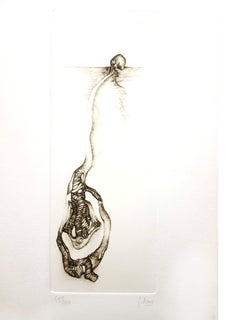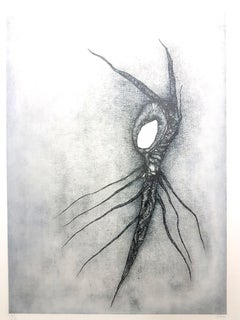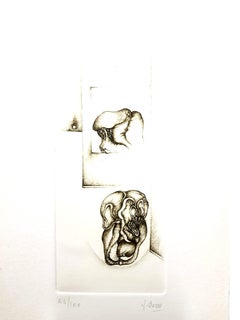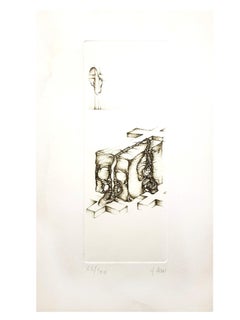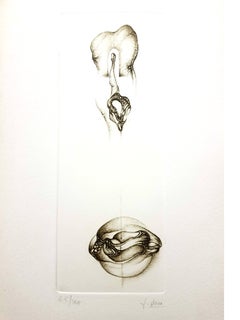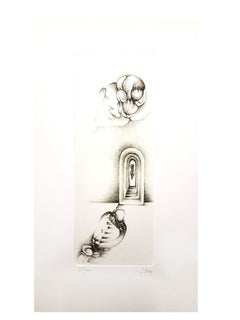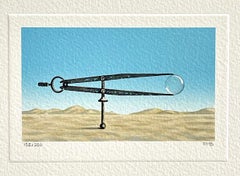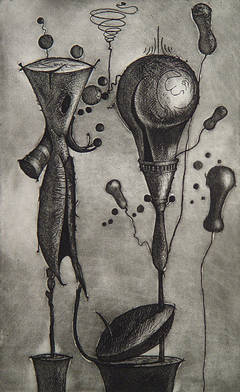Still-life Prints
1970s Surrealist Still-life Prints
Etching
1970s Surrealist Still-life Prints
1970s Surrealist Still-life Prints
Etching
1970s Surrealist Still-life Prints
Etching
1970s Surrealist Still-life Prints
Etching
1970s Surrealist Still-life Prints
Etching
1970s Surrealist Still-life Prints
Etching
1970s Surrealist Still-life Prints
Etching
1960s Surrealist Still-life Prints
Rag Paper, Etching
1970s Surrealist Still-life Prints
Rag Paper, Etching
1970s Surrealist Still-life Prints
Aquatint, Rag Paper, Etching
Late 20th Century Surrealist Still-life Prints
Rag Paper, Etching, Aquatint
1960s Surrealist Still-life Prints
Rag Paper, Etching
1970s Surrealist Still-life Prints
Rag Paper, Etching, Aquatint
1960s Surrealist Still-life Prints
Rag Paper, Etching, Aquatint
1970s Surrealist Still-life Prints
Rag Paper, Etching, Aquatint
1960s Outsider Art Still-life Prints
Rag Paper, Etching, Aquatint
1960s Outsider Art Still-life Prints
Etching, Aquatint, Rag Paper
1970s Outsider Art Still-life Prints
Rag Paper, Etching
1970s Outsider Art Still-life Prints
Rag Paper, Etching, Aquatint
1970s Outsider Art Still-life Prints
Rag Paper, Etching
1990s Surrealist Still-life Prints
Lithograph
1880s Naturalistic Still-life Prints
Engraving
2010s Contemporary Still-life Prints
Archival Paper, Etching, Aquatint
1990s Surrealist Still-life Prints
Lithograph
1970s Surrealist Still-life Prints
Lithograph
21st Century and Contemporary Minimalist Still-life Prints
Paper, Etching
21st Century and Contemporary Contemporary Still-life Prints
Ink, Etching, Paper, Intaglio
2010s Pop Art Still-life Prints
Tar, Screen
1930s American Realist Still-life Prints
Offset
1990s Surrealist Still-life Prints
Lithograph
1980s Contemporary Still-life Prints
Etching
Early 2000s Contemporary Still-life Prints
Etching, Aquatint
20th Century Surrealist Still-life Prints
Etching, Rag Paper
1960s Surrealist Still-life Prints
Aquatint, Etching, Rag Paper
1970s Outsider Art Still-life Prints
Etching, Rag Paper
1970s Outsider Art Still-life Prints
Etching, Rag Paper
1970s Outsider Art Still-life Prints
1970s Outsider Art Still-life Prints
Still-Life Prints and Other Still-Life Wall Art for Sale on 1stDibs
As part of the wall decor in your living room, dining room or elsewhere, original still-life prints and other still-life wall art can look sophisticated alongside your well-curated decorative objects and can help set the mood in a space.
Still-life art, which includes work produced in media such as painting, photography, video and more, is a popular genre in Western art. However, the depiction of still life in color goes back to Ancient Egypt, where paintings on the interior walls of tombs portrayed the objects — such as food — that a person would take into the afterlife. Ancient Greek and Roman mosaics and pottery also often depicted food. Indeed, popular still-life prints often feature food, flowers or man-made objects. By definition, still-life art represents anything that is considered inanimate.
During the Middle Ages, the still life genre was adapted by artists who illustrated religious manuscripts. A common theme of these still-life paintings is the reminder that life is fleeting. This is especially true of vanitas, a kind of still life with roots in the Netherlands during the 17th century, which was built on themes such as death and decay and featured skulls and objects such as rotten fruit. In northern Europe during the 1600s, painters consulted botanical texts to accurately depict the flowers that were the subject of their work.
While early examples were primarily figurative, you can find still lifes that belong to different schools and styles of painting and printmaking, such as Cubism, Impressionism and contemporary art.
Leonardo da Vinci’s penchant for observing phenomena in nature and filling notebooks with drawings and notes helped him improve as an artist of still-life paintings. Vincent van Gogh, an artist who made a couple of the most expensive paintings ever sold, carried out rich experiments with color over the course of painting hundreds of still lifes, and we can argue that Campbell’s Soup Cans (1961–62) by Andy Warhol counts as still-life art.
Still-life art enthusiasts and collectors of Warhol prints have lots of reasons to love the cultural icon — when Warhol brought the image of a Campbell’s soup can out of the supermarket and into the studio, in 1961, he secured his legacy as a radical contemporary artist. After Warhol painted the soup cans, he realized that he could more readily achieve the mass-produced aesthetic he was seeking with silkscreens, also called screen-prints, and he began experimenting with silkscreening on canvas. He used the technique to print paintings of Coke bottles and dollar bills (both in 1962), as well as his treasured Brillo box sculptures (1964).
When shopping for a still-life print, think about how it makes you feel and how the artist chose to represent its subject. When buying any art for your home, choose pieces that you connect with. If you’re shopping online, read the description of the work to learn about the artist and check the price and shipping information. Make sure that the works you choose complement or relate to your overall theme and furniture style. Artwork can either fit into your room’s color scheme or serve as an accent piece. Introduce new textures to a space by choosing an oil still-life painting.
On 1stDibs, the collection of still-life prints and other still-life wall art includes works by Jonas Wood, Alex Katz, Nina Tsoriti and many more.
